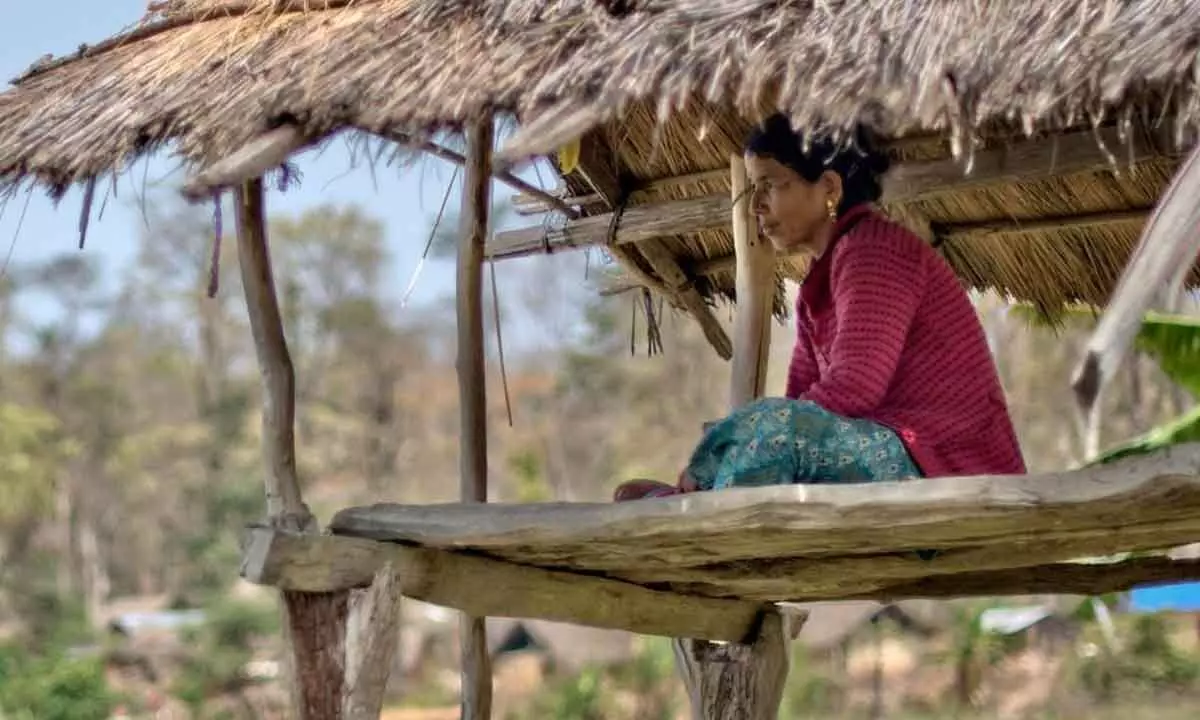Live
- Malaria cases, deaths in India decline by 69pc between 2017-2023: WHO
- ED raids three places in Bengal in online forgery scam case
- Manchu Manoj Questioned by Police Amid Family Dispute
- Bengaluru: IMD Issues Yellow Alert Amid Upcoming Rainfall
- Manchu Vishnu Addresses Media, Clarifies Incident Involving Mohan Babu
- HPCL inks pact with Sea6 Energy to convert seaweed biomass into fuels
- Numaish 2025: Hyderabad’s Grand Exhibition Kicks Off in January – All You Need to Know
- There will be opportunities from every crisis, says CM Chandrababu at collectors' conference
- Women now own 20.5 pc of MSMEs in India, startups surge in tier 2 and 3 cities
- 9 in 10 Indian firms say cloud transformation fuelling AI adoption: Report
Just In
Wildlife incursion spook people, officials on the coast


Even while there are cries from the fringe areas of the western ghats about the wildlife incursions into human habitation the fact remains that Human intervention in the wildlife areas was the prime reason behind the face-off.
Mangaluru: Even while there are cries from the fringe areas of the western ghats about the wildlife incursions into human habitation the fact remains that Human intervention in the wildlife areas was the prime reason behind the face-off. Increased number of wildlife sightings in the villages and towns deep into human habitations.
Earlier the incursions were seasonal and restricted to only a few species of animals but now an entire range of wildlife species that include Leopards, wild dogs, peacocks, foxes, pangolins, different types of rodents and one or two sightings of bears are also common. On Monday night a leopard hunted down a dog and a calf in Niddodi near the well-known temple town Kateel which has now given rise to theories that the food chain of the predators is under threat following the alteration of forests within the western ghats.
"There are rubber plantations, cashew plantations and many pipeline corridors, national highways, mini hydroelectric projects, dams, power lines and now the mammoth Nethravati diversion project which has been masked as the Yettinaholay storm water lift project has fragmented many wildlife habitats and diverted the seasonal flowing waterbodies which have also driven the wildlife to seek their water and prey in the human habitation," says Ajay Niddodi a wildlife activist.
Forest officials are not any less baffled, a forest official on conditions of anonymity said over the last 10 years big petroleum pipeline projects and unplanned road construction in the western ghats have given rise to the loss of habitats and changes in the foliage pattern have also driven the primary prey animals out of the habitats of the predator animals. The prey animals do not have boundaries and they move from one place to another in search of food, but the predators do have their marked boundaries and if they did not get the food they will either start foraging into the nearby human habitations or cross into another animals boundaries and gets killed there. "The recent incursions of leopards in Niddodi are unexplained," the official said.
Amarnath Rai a farmer says during his morning trips to his farm he comes across many smaller animals that are not residents of this area. "I had rescued a Pangolin a couple of months from dogs" he adds.
Common Langurs, Diana Monkeys, enter various places around Karkala, Kundapur, and Hebri,(all in Udupi district) while peacocks and foxes are found in abundance in small villages across Moodbidri, Naravi, Bannadka and many other villages and small towns. A farmer in Shankaranarayana in Kundapur taluk Vignesh Rao says he has lost a crop of 25,000 coconuts in a year due to the invasion of common langurs. His neighbour who grows Rambutan says 60 per cent of his crop is devoured by peacocks and giant flying squirrels.
Following the wildlife incursions, the villagers have started planting wild mango, jack, wild jack, Jamun and other wild berries and fruits at least half a kilometre inside the forests surrounding their villages. "We do have good demand for the saplings of the wild variety of fruits and berries of late which we reckon is to give the food of the wildlife back to them and keep them inside their habitats," said R Sridhar Range Forest officer of the Mangaluru division.

© 2024 Hyderabad Media House Limited/The Hans India. All rights reserved. Powered by hocalwire.com






